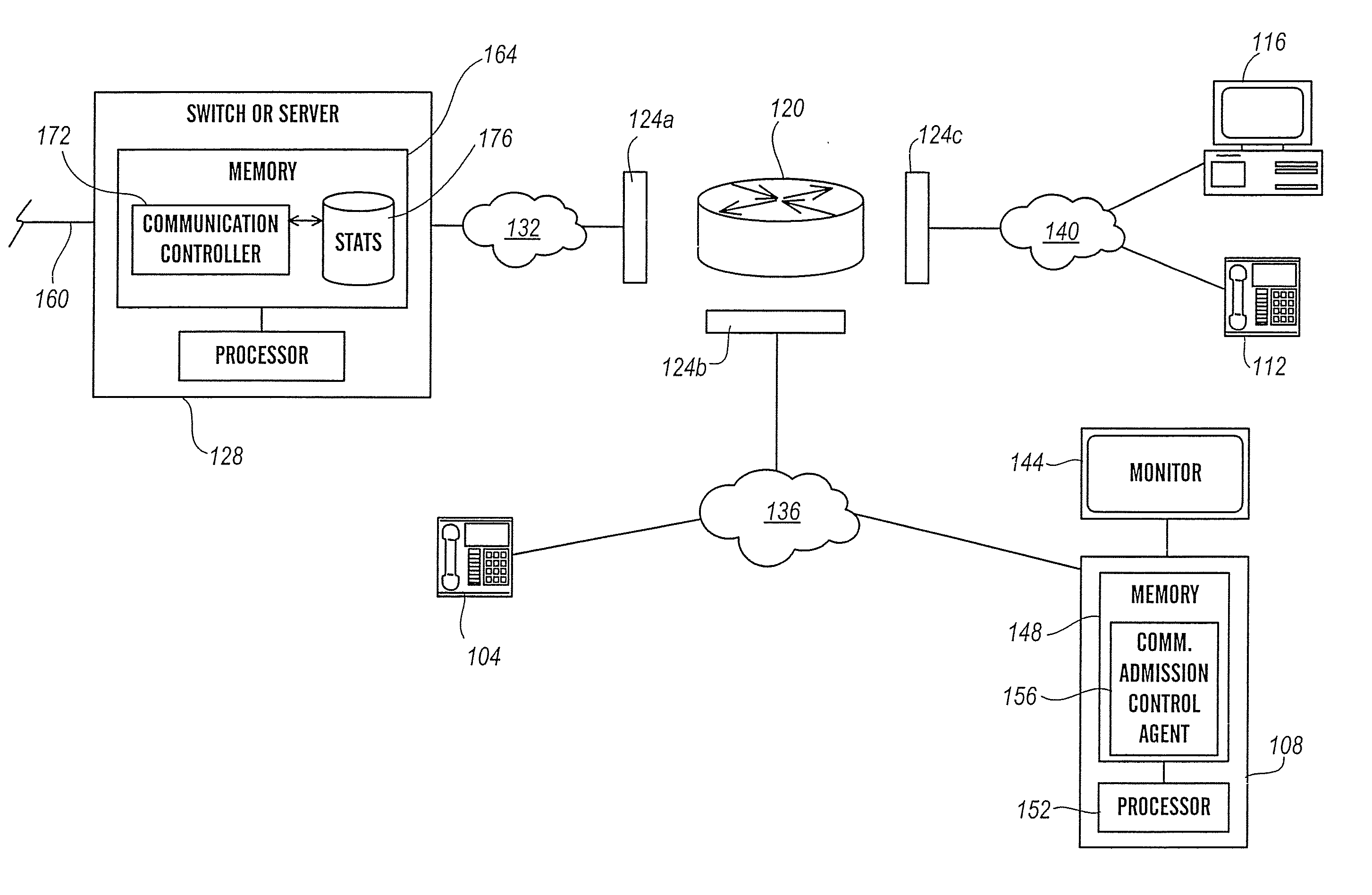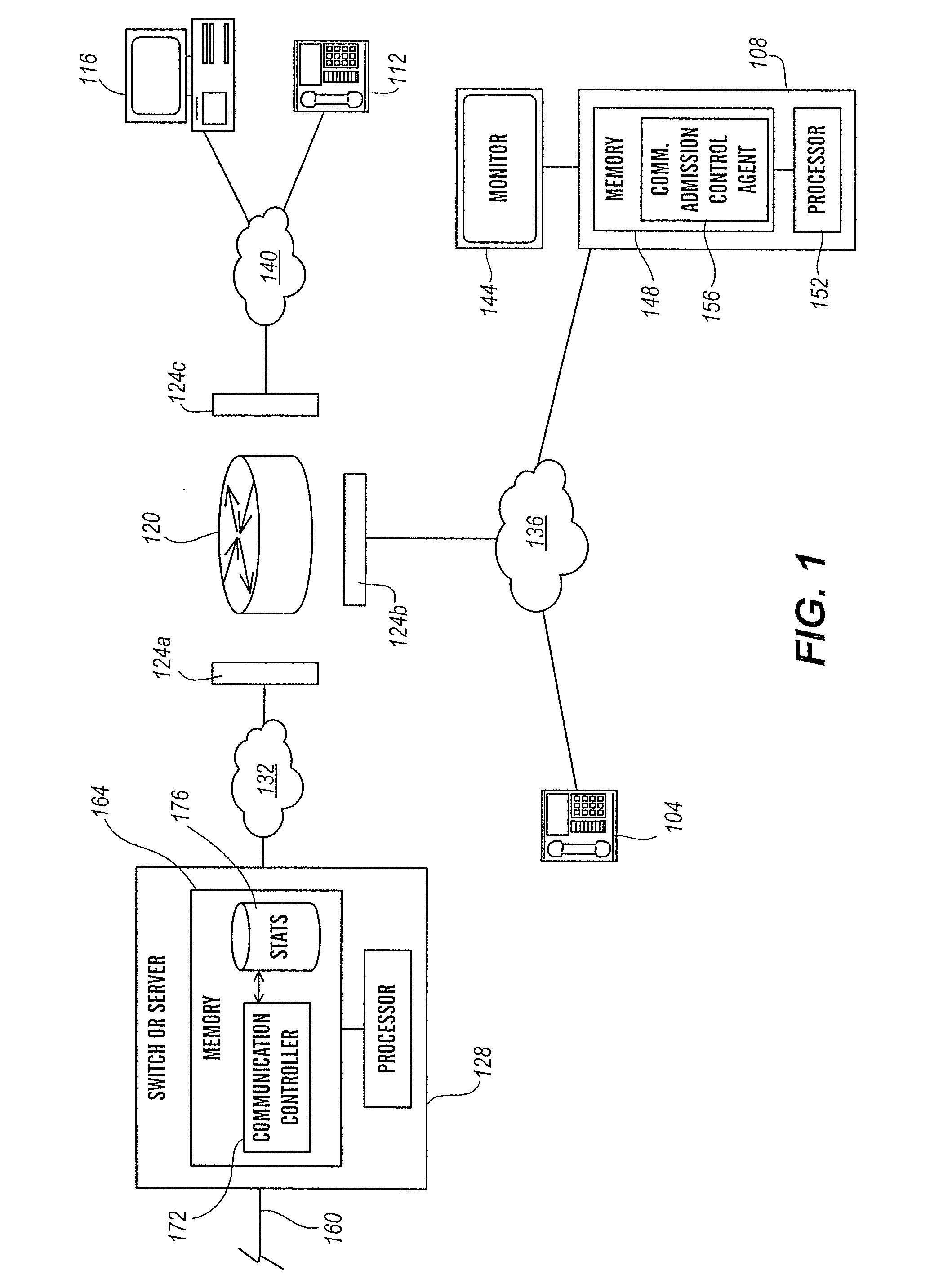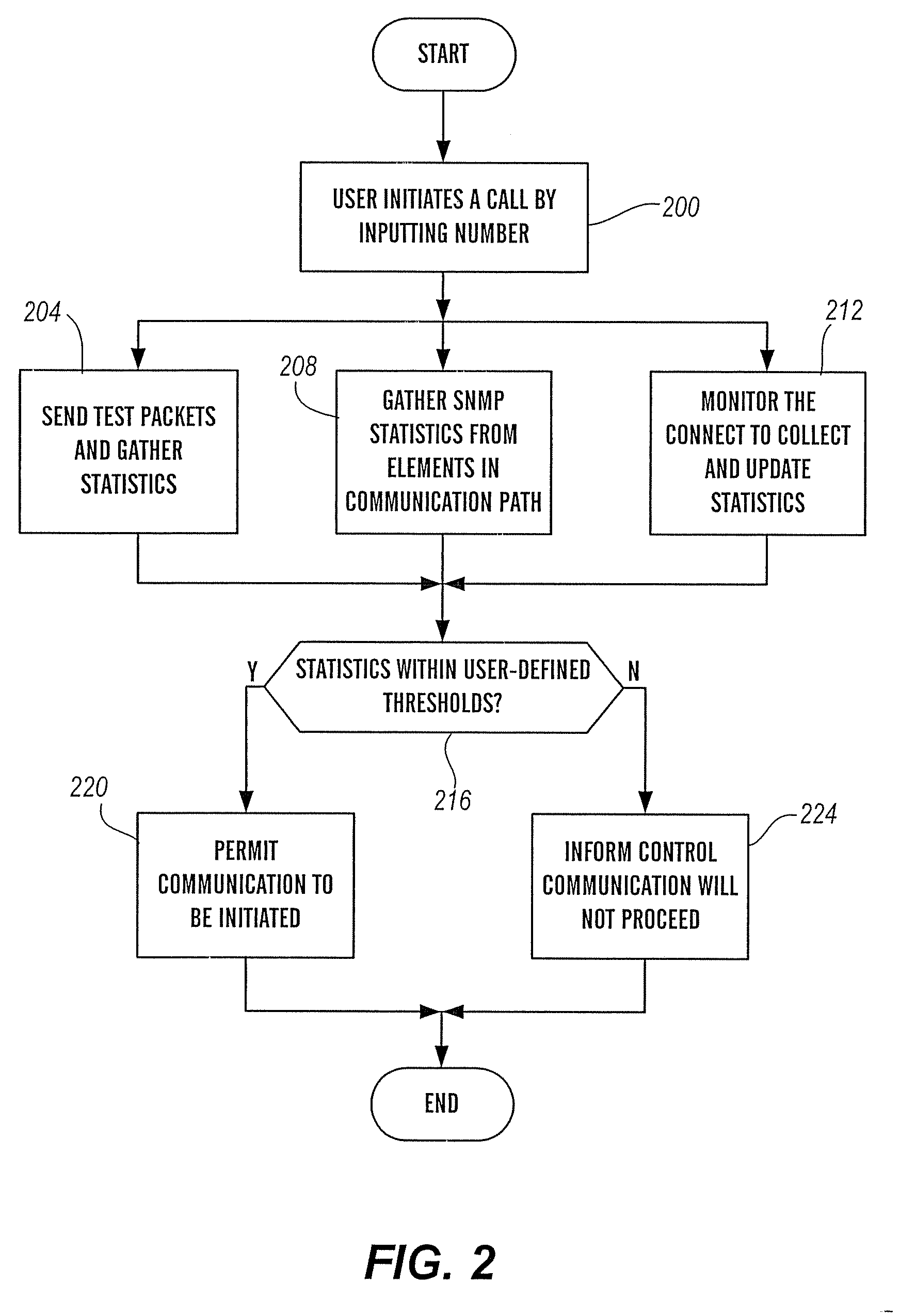VOIP endpoint call admission
a voice and endpoint technology, applied in the field of voice communication over data networks, can solve the problems of user experience a much poorer quality of communication, inability to accept audio synchronization levels, and detrimental to the quality of other calls, and achieve the effect of less expensiv
- Summary
- Abstract
- Description
- Claims
- Application Information
AI Technical Summary
Benefits of technology
Problems solved by technology
Method used
Image
Examples
Embodiment Construction
[0036]FIG. 1 depicts a VoIP architecture 100 according to an embodiment of the present invention. The architecture includes a first, second, third, and fourth end points 104, 108, 112, and 116, a router 120 having associated interfaces 124a-c, and switch or server 128. The various components are interconnected by first, second, and third subnets 132, 136, and 140, respectively, which collectively form a local area network. For illustration purposes, the first and third endpoints 104 and 112 are configured as IP hard-phones, while the second and third endpoints 108 and 116 are configured as IP soft-phones. As will be appreciated, the various end points can be any communication device, such as a plain old telephone, a soft phone, an IP hard phone, a personal or laptop computer, a PDA, a pager, and a wireless phone. It is further to be understood that the architecture can include any number of subnetworks and routers, depending on the application, and that the subnets can form a networ...
PUM
 Login to View More
Login to View More Abstract
Description
Claims
Application Information
 Login to View More
Login to View More - R&D
- Intellectual Property
- Life Sciences
- Materials
- Tech Scout
- Unparalleled Data Quality
- Higher Quality Content
- 60% Fewer Hallucinations
Browse by: Latest US Patents, China's latest patents, Technical Efficacy Thesaurus, Application Domain, Technology Topic, Popular Technical Reports.
© 2025 PatSnap. All rights reserved.Legal|Privacy policy|Modern Slavery Act Transparency Statement|Sitemap|About US| Contact US: help@patsnap.com



